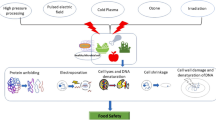Abstract
The aim of this study is to determine whether radiation heat transfer is responsible for the position dependence of heat transfer known as the edge vial effect. Freeze drying was performed on a laboratory-scale freeze dryer using pure water with vials that were fully stoppered but had precision cut metal tubes inserted in them to ensure uniformity in resistance to vapor flow. Sublimation rates were determined gravimetrically. Vials were sputter-coated with gold and placed at selected positions on the shelf. Average sublimation rates were determined for vials located at the front, side, and center of an array of vials. Sublimation rates were also determined with and without the use of aluminum foil as a radiation shield. The effect of the guardrail material and its contribution to the edge vial effect by conduction heat transfer was studied by replacing the stainless steel band with a low-thermal conductivity material (styrofoam). The emissivities (ε) of relevant surfaces were measured using an infrared thermometer. Sublimation rate experiments were also conducted with vials suspended off the shelf to study the role of convection heat transfer. It was found that sublimation rates were significantly higher for vials located in the front compared to vials in the center. Additional radiation shields in the form of aluminum foil on the inside door resulted in a decrease in sublimation rates for the front vials and to a lesser extent, the center vials. There was a significant decrease in sublimation rate for goldcoated vials (ε≈0.4) placed at the front of an array when compared to that of clear vials (ε≈0.9). In the case of experiments with vials suspended off the shelf, the heat transfer coefficient was found to be independent of chamber pressure, indicating that pure convection plays no significant role in heat transfer. Higher sublimation rates were observed when the steel band was used instead of Styrofoam while the highest sublimation rates were obtained in the absence of the guardrail, indicating that the metal band can act as a thermal shield but also transmits some heat from the shelf via conduction and radiation. Atypical radiation heat transfer is responsible for higher sublimation rates for vials located at the front and side of an array. However, the guardrail contributes a little to heat transfer by conduction.
Similar content being viewed by others
References
Pikal MJ, Roy ML, Shah S. Mass and heat transfer in vival freeze-drying of pharmaceuticals: role of the vial. J Pharm Sci. 1984;73(9):1224–1237.
Gatlin LA, Nail SL. Protein purification process engineering: freeze drying: a practical overview. Bioprocess Technol. 1994;18:317–367.
MacKenzie AP. The physico-chemical basis for the freezedrying process. Dev Biol Stand. 1976;36:51–67.
Pikal MJ. Use of laboratory data in freeze drying process design: heat and mass transfer coefficients and the computer simulation of freeze drying. J Parenter Sci Technol. 1985;39(3):115–139.
Liapis AI, Pikal MJ, Bruttini R. Research and development needs and opportunities in freeze drying. Dry Technol. 1996;14(6):1265–1300.
Trappler E. Scale-up strategy for a lyophilization process. Am Pharm Rev. 2001;4(3):55–60.
Nail SL. The effect of chamber pressure on heat transfer in the freeze drying of parenteral solutions. J Parenter Drug Assoc. 1980;34:358–368.
Rowe T, Greiff D, Monrow J. Rate distribution in shelf freeze drying: preliminary studies. Paper presented at: 15th International Congress of Refrigeration; Sep 23–29, 1979; Venice, Italy.
Kobayashi M, Harashima K, Sunama R, Yao A. Inter-vial variance of the sublimation rates in shelf freeze-dryer. Paper presented at: 18th International Congress of Refrigeration; August 10–17, 1991; Montreal, Canada.
Searles JA, Carpenter JF, Randolph TW. Primary drying rate heterogeneity during pharmaceutical lyophilization. Am Pharm Rev. 2000;3(3):6–24.
Zitomer J, Placek J. Resolution of heat transfer contributions in a laboratory lyophilizer. Poster presented at AAPS Annual Meeting; October, 2000; New Orleans, LA.
Incropera FP, Dewitt DP: Introduction to Heat Transfer. 2nd ed. New York: John Wiley & Sons; 1990.
Perry RH, Chilton CH. Perrys Chemical Engineers Handbook. McGraw-Hill Chemical Engineering Series, 6th Edition. New York: McGraw-Hill Ltd, 1984.
Author information
Authors and Affiliations
Corresponding author
Rights and permissions
About this article
Cite this article
Rambhatla, S., Pikal, M.J. Heat and mass transfer scale-up issues during freeze-drying, I: Atypical radiation and the edge vial effect. AAPS PharmSciTech 4, 14 (2003). https://doi.org/10.1208/pt040214
Received:
Accepted:
DOI: https://doi.org/10.1208/pt040214




